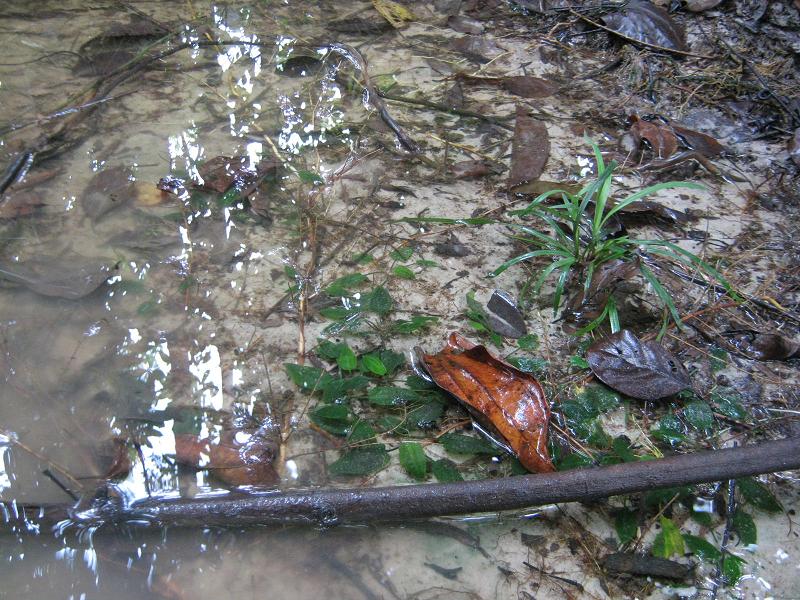 |
Habitat of C. scurrilis in a small stream flowing towards a tributary of the Indragiri river...
photo Nakamoto |
Habitat |
|
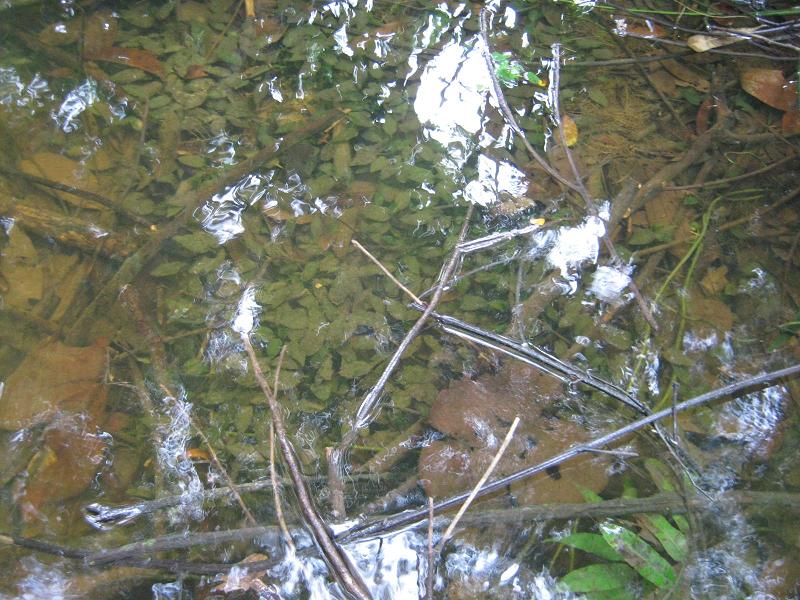 |
...where it grows half shaded, in shallow water, pH 5-6.
photo Nakamoto
|
|
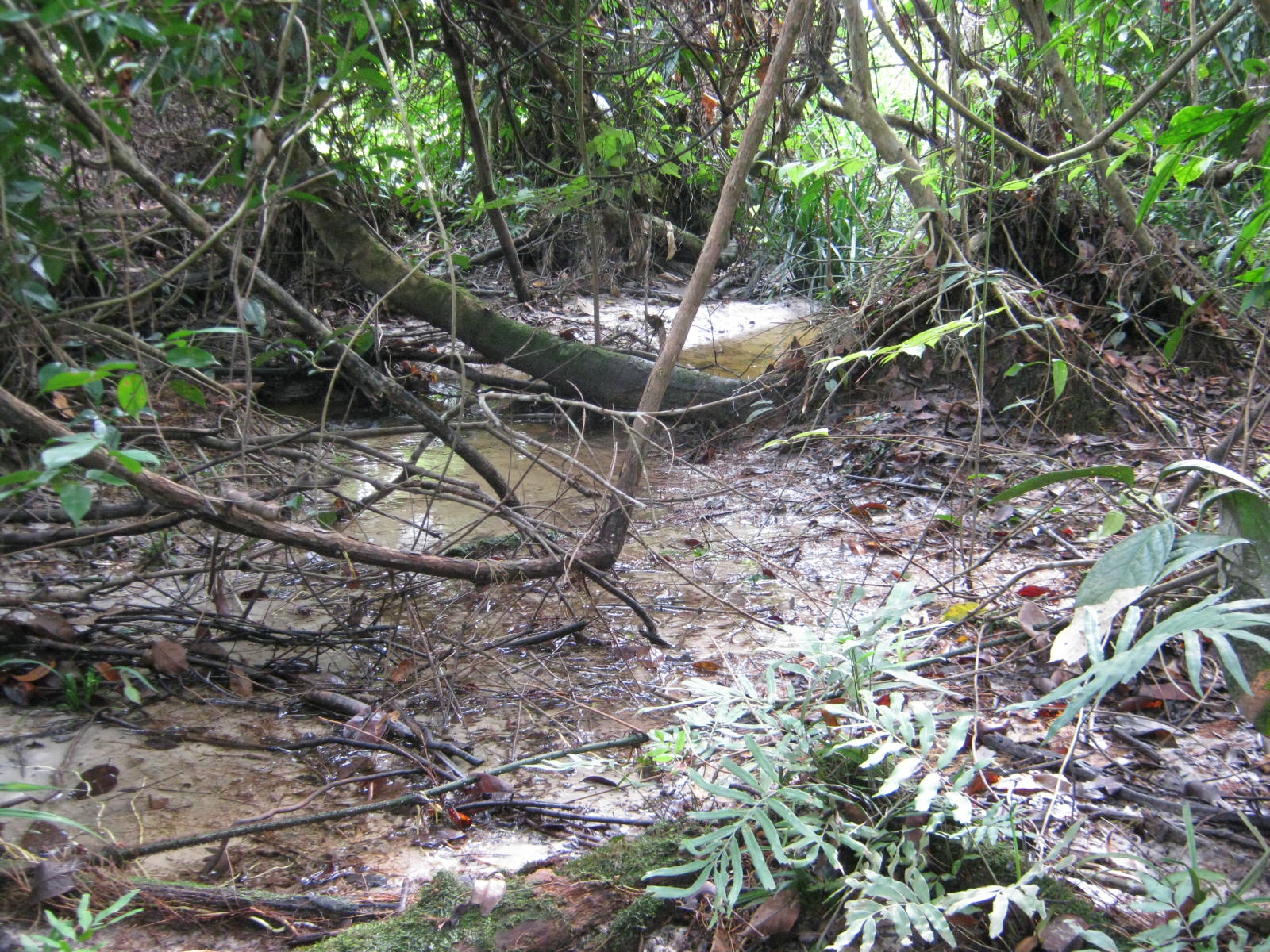 |
Parts of the stream may seasonally dry out, the plants will survive.
photo Nakamoto |
|
 |
Note the fine sandy bottom. Better do not imitate this for cultivation.
photo Nakamoto
|
|
| |
|
|
|
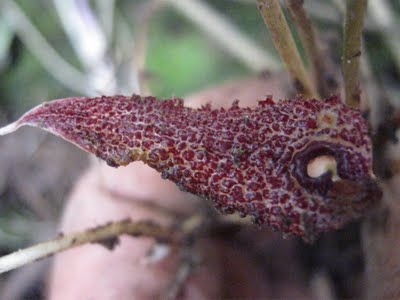 |
The limb of the spathe. Note the pronounced and elevated collar.
photo Nakamoto
|
|
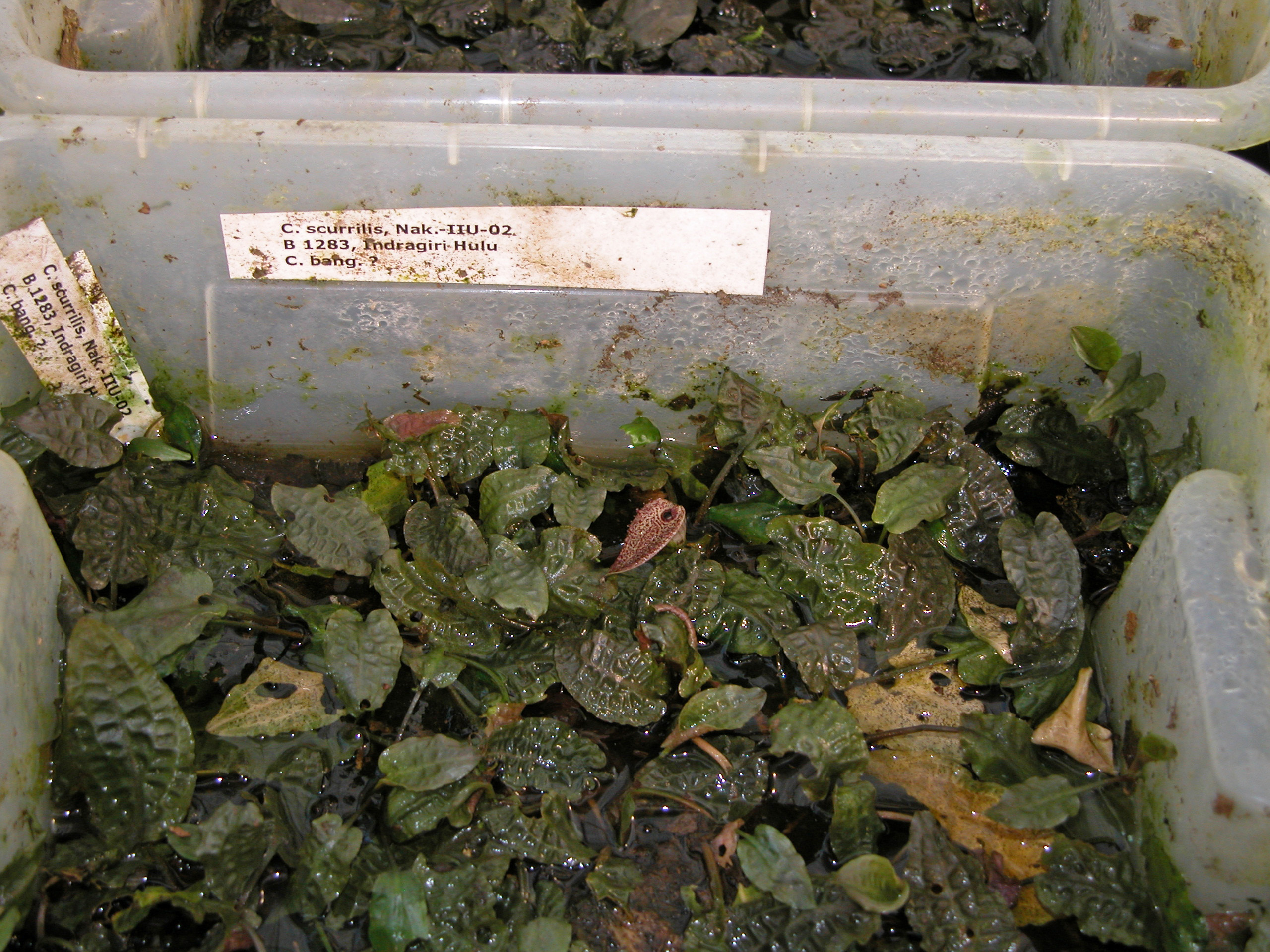 |
Cultivated in acid beech tree leaf litter...
coll. KN IIU-02, cult. NJ
photo Jacobsen
|
|
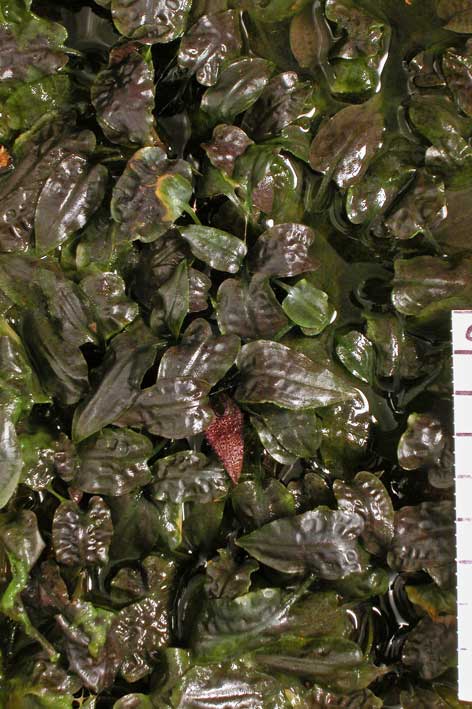 |
...where it multiplies (too) fast. The leaves become smaller and more brownish.
coll. KN IIU-01, cult. B 1282
|
|
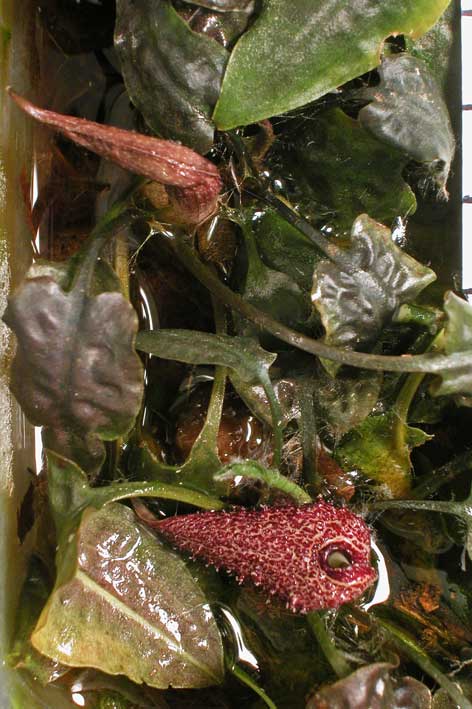 |
When settled, it flowers abundantly.
coll. KN IIU-01, cult. B 1282
|
|
| |
|
|
|
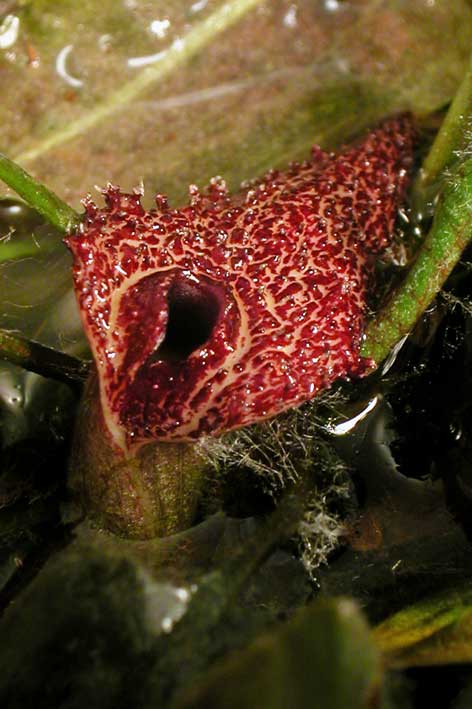 |
Note again the typical elevated, somewhat asymmetrical collar.
coll. KN IIU-01, cult. B 1282
|
|
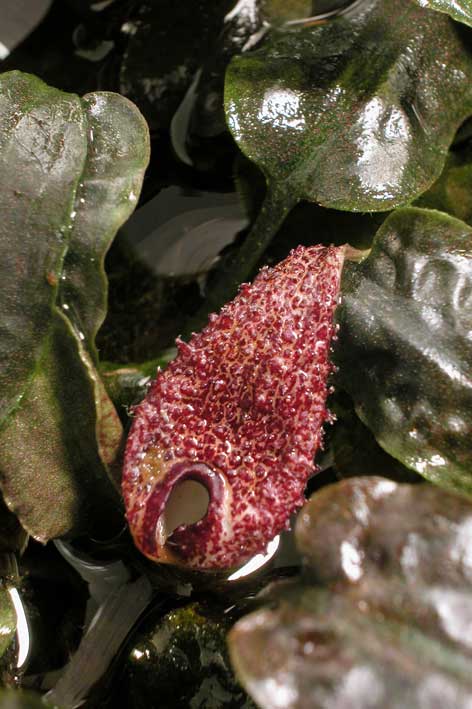 |
The limb of the spathe is spread horizontal after opening...
coll. KN IIU-01, cult. B 1282
|
|
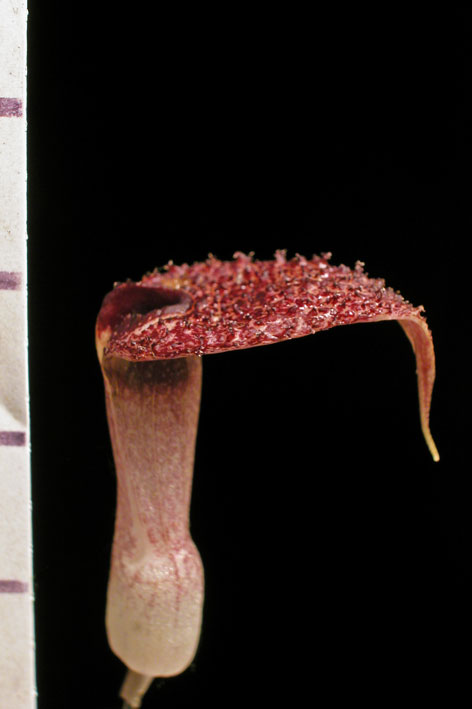 |
... and soon the tip will bend down...
coll. KN IIU-01, cult. B 1282
|
|
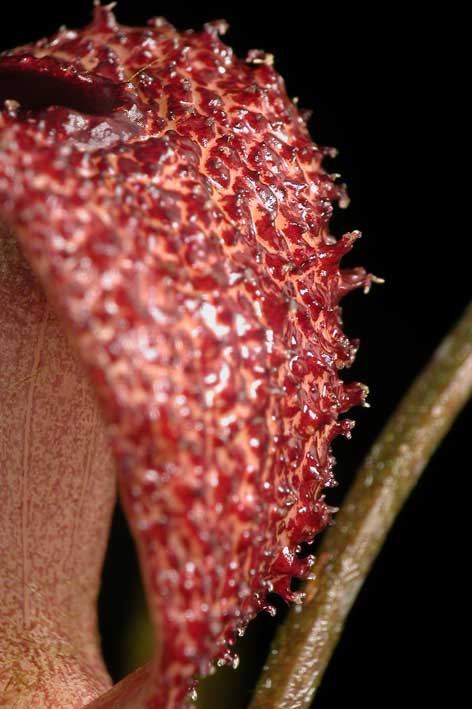 |
... and finally the whole limb, almost resembling C. minima.
coll. KN IIU-01, cult. B 1282
|
|
| |
|
|
|
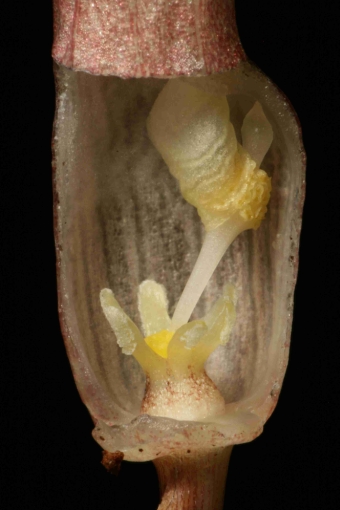 |
Opened kettle of C. scurrilis. Note the long styles and stigma's. The spadix is pulled away from behind the flap
coll. KN IIU-01, cult. SR 328
photo Reitel
|
|
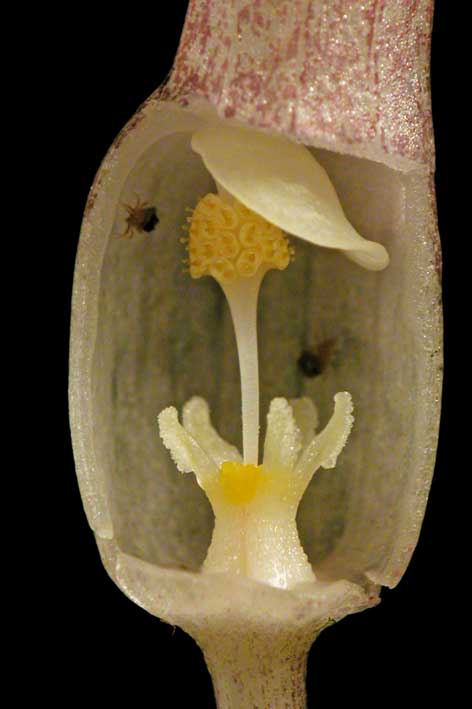 |
Another opened kettle. Note the attachment of the top of the spadix on the left side. Left and right handedness is a normal variation in Cryptocoryne.
vcoll. KN IIU-01, cult. B 1282
|
|
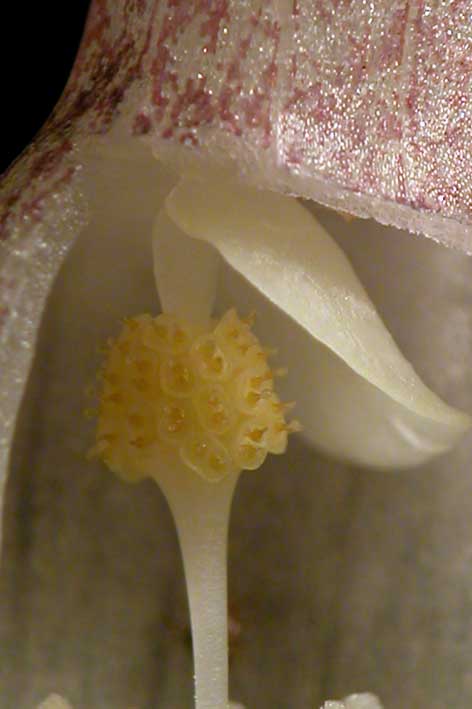 |
A close up of the male flowers. The pollen drops are already visible.
coll. KN IIU-01, cult. B 1282
|
|
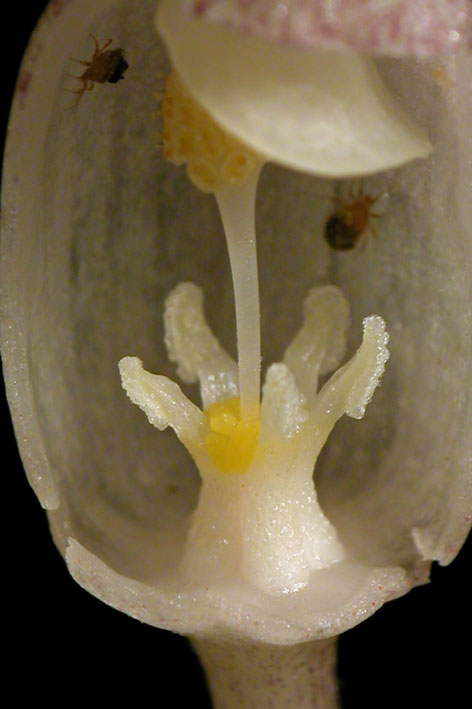 |
A close up of the female flowers
coll. KN IIU-01, cult. B 1282
|
|
| |
|
|
|
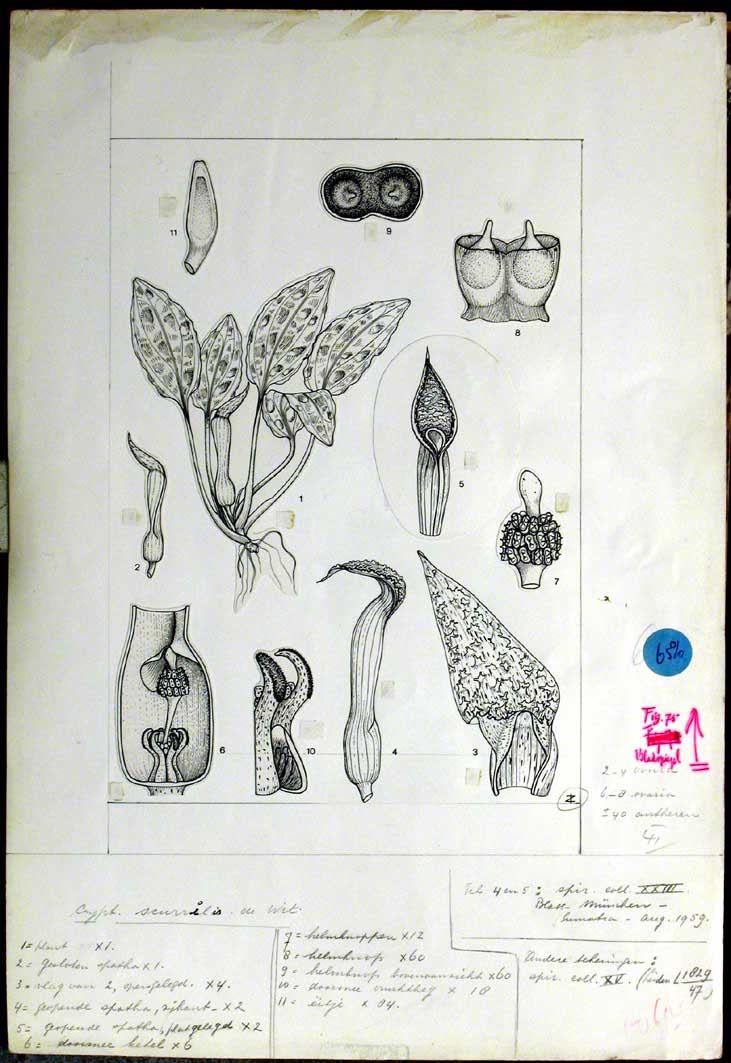 |
The original drawing of C.
scurrilis in De Wit (1962, 1990) with the legends by Ike Zewald. Figures 4 and 5 refer to C. bangkaensis.
Courtesy herbarium
WAG.
drawing Ike Zewald
|
|
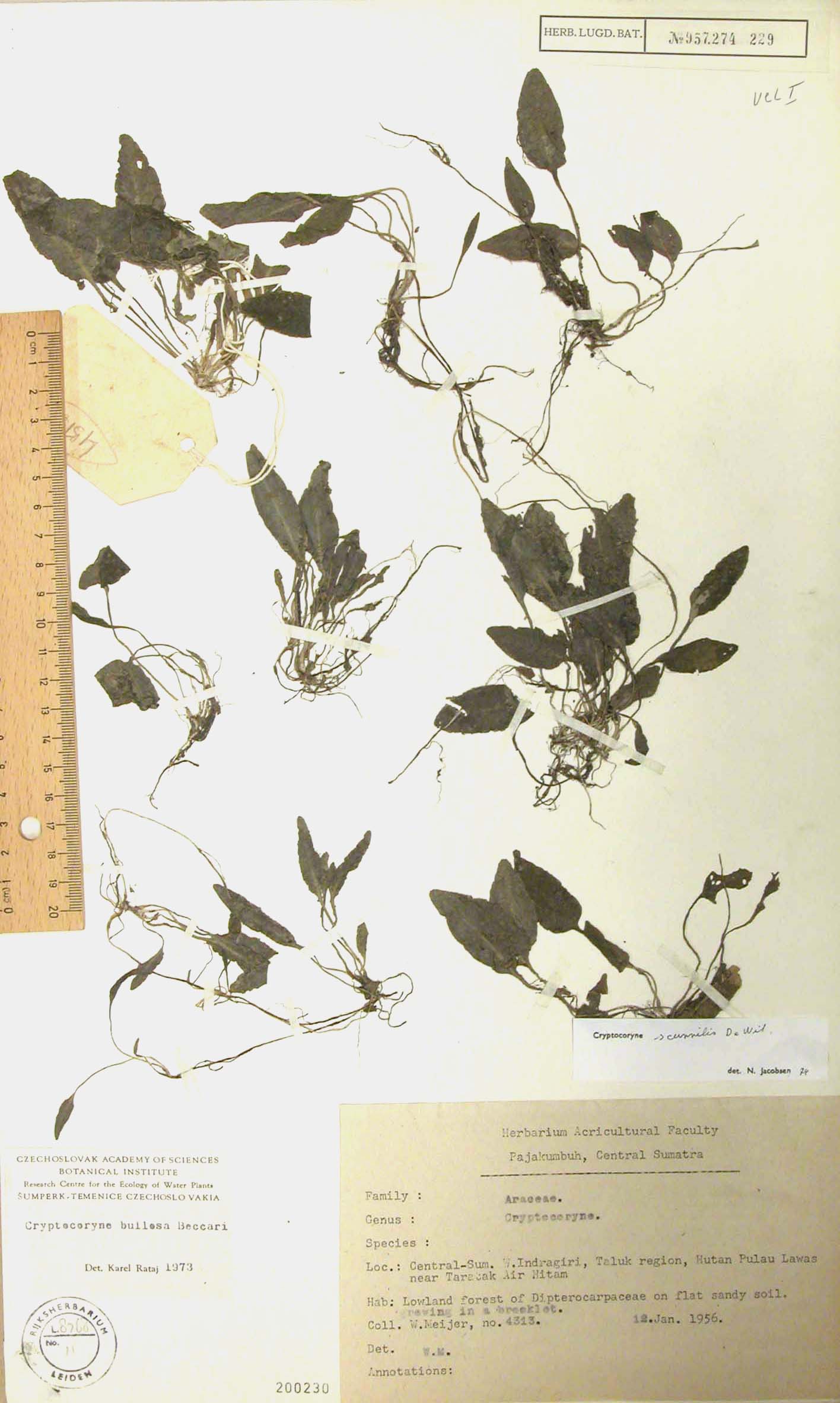 |
One of the two sheets Meijer 4313 of C. scurrilis in the Leiden herbarium (L). Only one plant (top left) has an immature spathe left.
No fruits are present.
coll. Meijer 4313
|
|
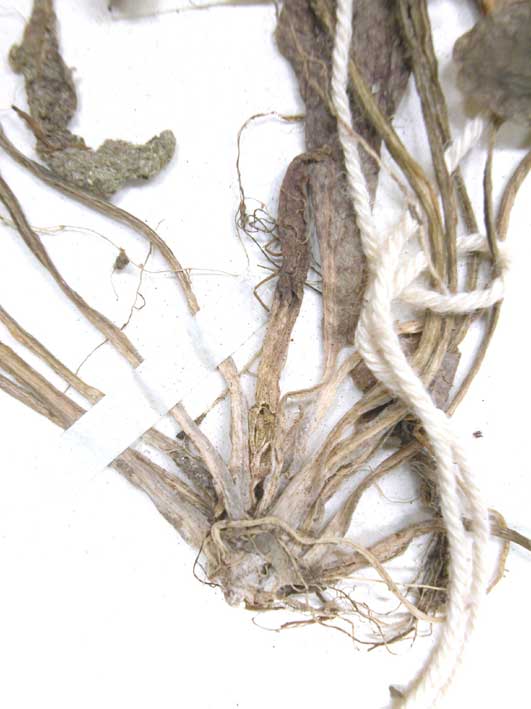 |
Close up of the herbarium sheet (left) with the immature spathe.
coll. Meijer 4313
|
|
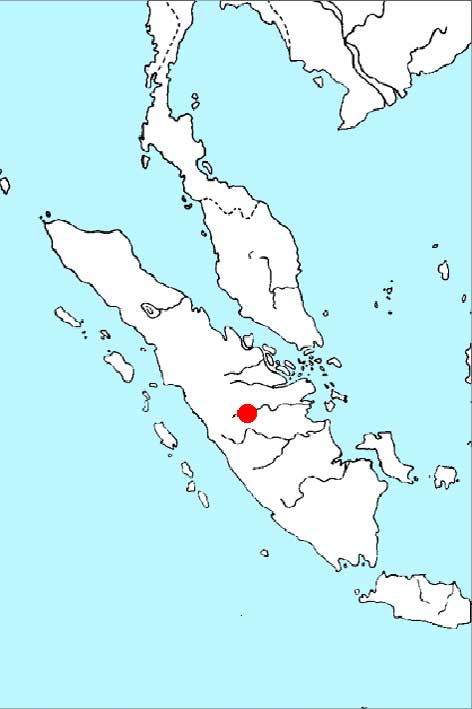 |
Distribution of C. scurrilis in Sumatra (Indonesia).
|
|
| |
|
|
|
Cultivation
Despite of it's habitat, it is far more easy to grow C. scurrilis in a loose substrate of acid leaf litter, emerged in pots or half submerged in a simple plastic container, see Reitel et al. in the references.
Note. The naming of this plant has a quite complicated history. See under C. bangkaensis. Nakamoto's rediscovery is without doubt the C. scurrilis that Meijer found in 1956 but on the other hand a lot of new plants are found in Sumatra which are more or less intermediate between this plant and C. nurii. Also a number of (natural) hybrids are encountered, making the picture even more complicated. The story will be continued.
Updated November 2012 |
Literature.
- Bastmeijer, J.D. & N. Jacobsen, 2007, Cryptocoryne bangkaensis Bastmeijer, ein neuer Name für eine gut bekannte Cryptocoryne von Sumatra (Indonesien).
Aqua-Planta 32(2): 41, 44-55 (Document service).
- Nakamoto, K., 2012, http://cryptoandbetta.blogspot.nl/search/label/C. scurrilis
- Reitel, S., K. Nakamoto & J.D.Bastmeijer, 2012, Die echte Cryptocoryne scurrilis de Wit (Araceae), Aqua-Planta 37(4): 135-142 (Document service).
- Wang T.S., 2012, http://illumbomb.blogspot.com/search/label/C. scurrilis
- Wit, H.C.D.de, 1962, Nieuwe waterplanten, Meded.Bot tuinen en het Belmonte arboretum WAG
Vol VI-4 : 92-98.
- Wit, H.C.D.de, 1990, Aquarienpflanzen, 2. Auflage, Ulmer, Stuttgart.
|
|